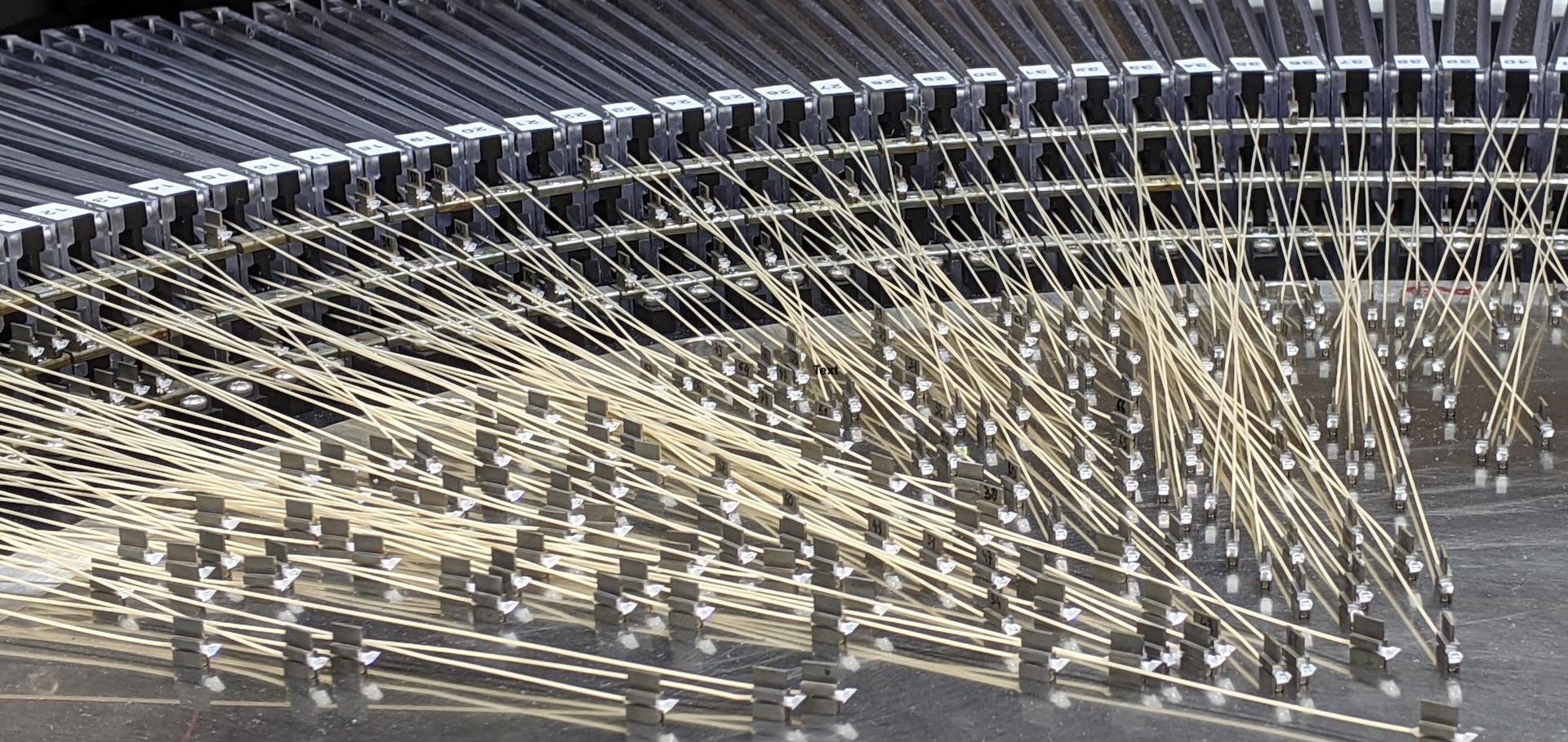WEAVE - The Next Generation Spectroscopy Facility for the WHT
WEAVE is a multi-object and multi-IFU facility utilizing a new 2-degree prime focus field of view at the 4.2m William Herschel Telescope (WHT), with a buffered pick-and-place positioner system hosting up to 1000 multi-object (MOS) fibres, 20 integral field units, or a single large IFU for each observation. The fibres are fed to a single (dual-beam) spectrograph, with total of 16k spectral pixels, located within the WHT GHRIL enclosure on the telescope Nasmyth platform, supporting observations at R~5000 over the full 370-1000nm wavelength range in a single exposure, or a high resolution mode with limited coverage in each arm at R~20000.
WEAVE has been designed and constructed by an Oxford-led consortium involving researchers in the UK, the Netherlands, Spain, France, Italy, Germany, Sweden, Mexico and Hungary. The facility will carry out a 5-year survey programme at the WHT to produce more than 10,000,000 spectra of stars and galaxies, addressing science topics from the structure and formation of the Milky Way through to the formation and evolution of the most distant galaxies in the Universe.
MOSAIC - Multi Object Spectroscopy at the Extremely Large Telescope
The workhorse instruments of the current 8-10m class observatories are multi-object spectrographs (MOS), providing comprehensive follow-up of ground-based and space-borne imaging data. With the advent of even deeper imaging surveys from, e.g., HST, VISTA, JWST and Euclid, many science cases require complementary spectroscopy with high sensitivity and good spatial resolution to identify the objects and to measure their astrophysical parameters. The light-gathering power of the 39m ELT and its spatial resolution, combined with a MOS, will enable the large samples necessary to tackle some of the key scientific drivers of the ELT project, ranging from studies of stellar populations out to the highest-redshift galaxies.
The design of such an instrument on the scale of the ELT is extremely challenging, requiring a combination of adaptive optics, novel positioning technology and state-of-the-art spectroscopy in the visible and near-infrared.


